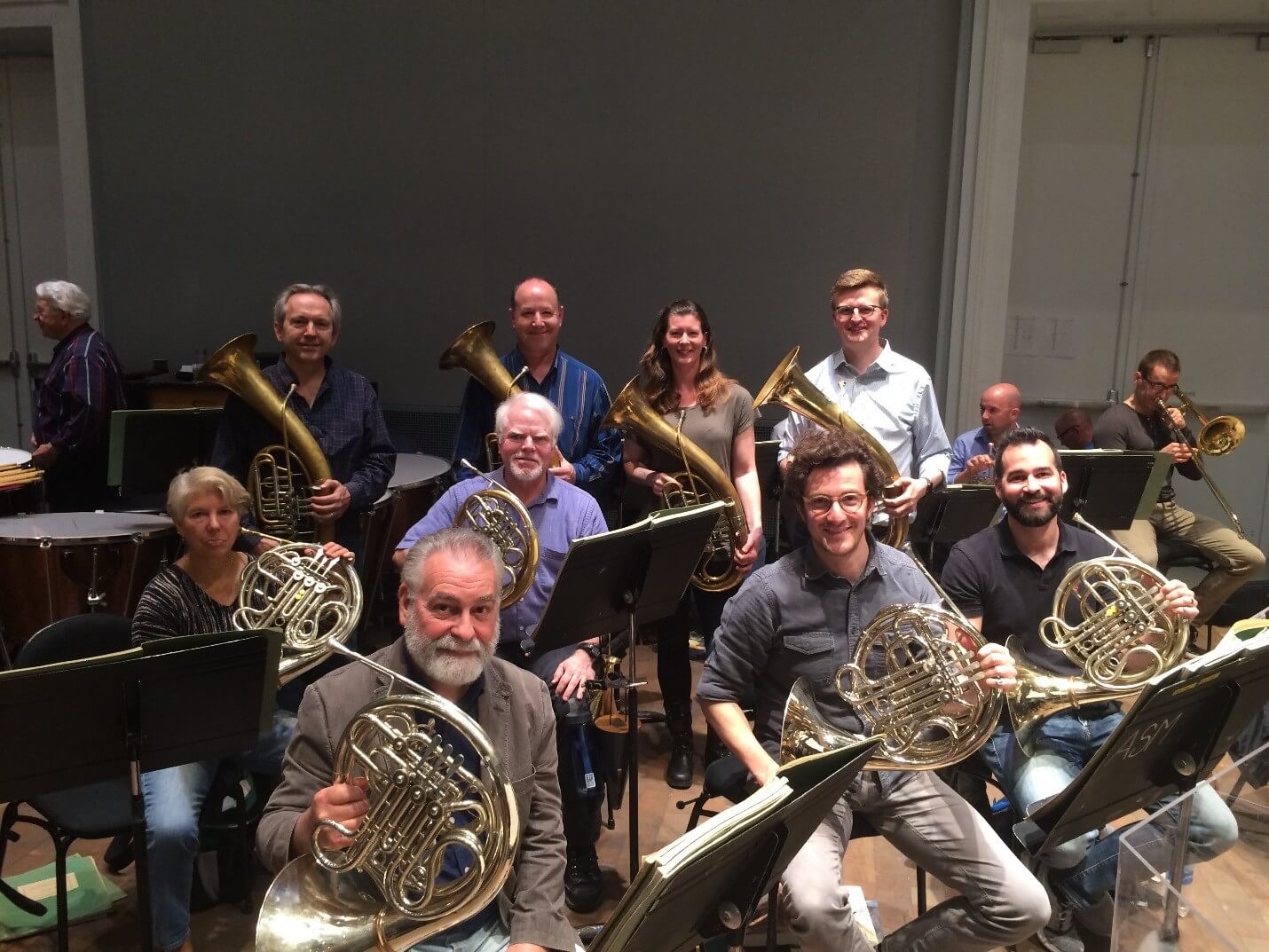Backstage with Matthew: A Noble Ring

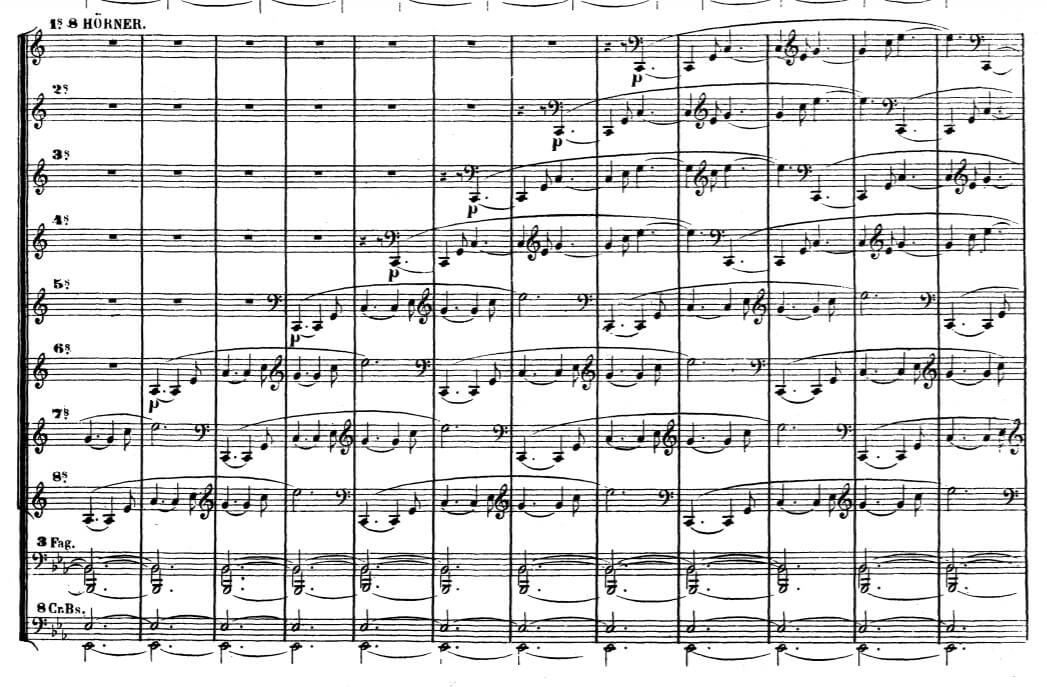
There are certain hallmarks of Wagner’s orchestration and one of the most notable has to be his horn writing: the horns bring pride, warmth, and a fabulous presence of sound to Wagner’s operas, and particularly the Ring. They define so many of the great moments of the Cycle, from the opening of Rheingold to Wotan’s farewell to Brünnhilde, to those great orchestral interludes of Götterdämmerung like Siegfried’s Funeral March.
I am writing this during one of the Sitzprobe rehearsals in the Taube Atrium of the Wilsey Center—the coming together of the great San Francisco Opera Orchestra, and our phenomenal principal singers under the baton of former Music Director Donald Runnicles. It is a privilege to be surrounded by the luxuriant sound of this orchestra, and I wanted to showcase the two gentlemen who helm the horn section: co-principal horns Kevin Rivard and Mark Almond. It’s very common for orchestras to have two people sharing the duties of principal horn given that it’s one of the most physically demanding instruments.
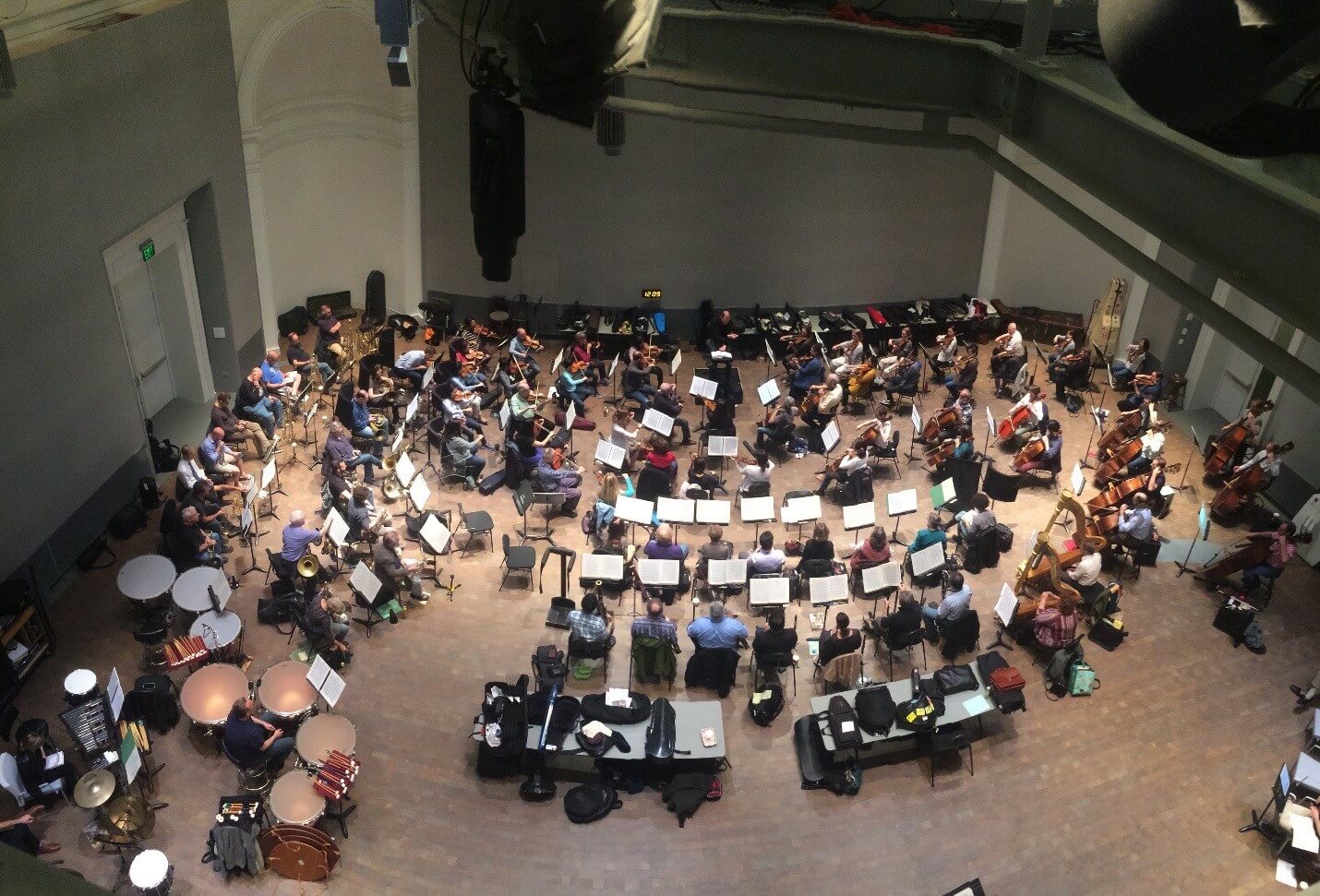
This is Kevin’s second Ring with San Francisco Opera, and Mark’s first. Mark joined us from the UK in 2016, where he was playing with the Philharmonia Orchestra. During that time he played orchestral extracts from the Ring, including at the opening concert of the Fenice Opera House in Venice, but he is thrilled to be exploring new moments, such as the sunrise scene in Götterdämmerung. Kevin is passionate about the Ring and has gone deep into research about the musical leitmotifs and how they morph and change through the cycle. In fact, he and I were recently geeking out over leitmotifs and comparisons between leitmotifs in the Ring and Star Wars, as outlined in a recent New Yorker article by Alex Ross.
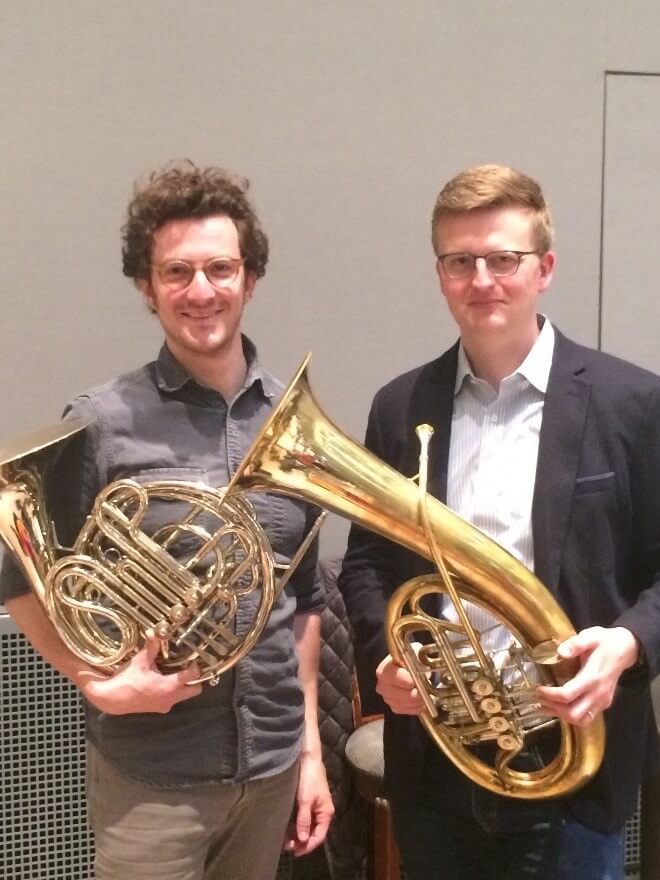
There are 10 horns featured in the Ring: five people playing French horn (including one horn supporting the principal), one person just playing backstage, and then four people playing both French horns and Wagner tubas. It’s a mighty force!

Wagner was obsessive about every detail of his operas—he espoused a philosophy of Gesamtkunstwerk, or “total work of art” and he himself was personally invested in every element. Not only the music and text of his operas, but the casting, the stage directions and, for the Ring, even a dedicated opera house at Bayreuth, and a dedicated instrument in the Wagner tuba. The Wagner tuba has a sound in between a French horn and a trombone—a softer, even nobler sound than the French horn. The Wagner tubas appear notably with the Valhalla motif in the Ring. Wagner tubas are notoriously difficult to play and to keep in tune. Mark notes that they are lovingly called “catastrophones” in the UK! You can hear the subtle difference between the two instruments in the Universal Studios theme in which we hear first the French horns, and then the Wagner tubas.
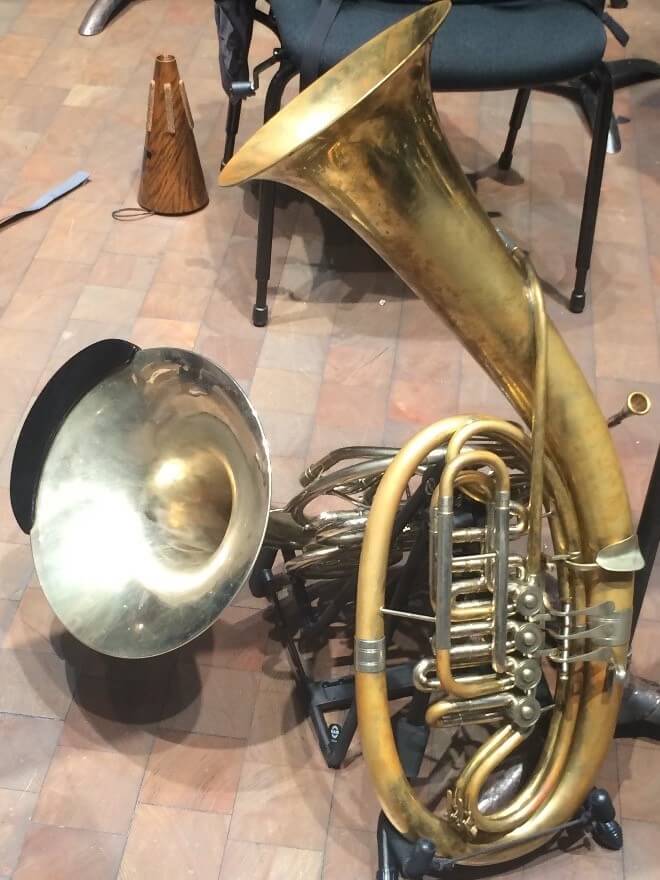
Kevin is leading the French horns in the Ring, and Mark the Wagner tubas. They tell me how different the pacing is in the Ring for the different instruments. Those playing French horn are playing full tilt throughout the whole cycle—it’s physically demanding and requires huge stamina and pacing to make it through night after night, week after week. The Wagner tubas are used more sporadically through the operas, and Mark says that it’s as much a mental exercise of staying focused and warmed up so that when you come in with a critically important passage, you are ready! He shows me a place in the score where there are 562 measures of rest. Players have different tactics for counting rests like this from marking vocal passages as landmarks, to spotting musical connections to later pieces that borrow from Wagner, to even setting a timer!
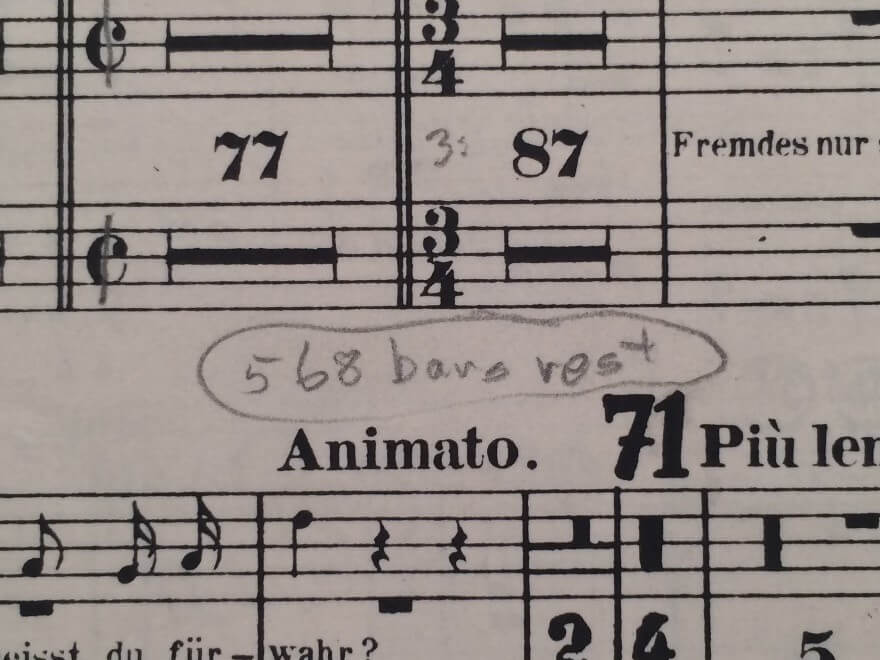
The horn parts in the Ring make complete use of the instrument, covering the entire range of notes, creating powerful climaxes as well as incredible soft, sustained high notes. For example, at the end of Die Walküre, after playing for almost five hours and being physically exhausted, Wagner calls on the horns to play exposed solos at the top of the register. It’s not music making for the faint hearted, and all eight horn parts have major solos.
One of the ways that Wagner (and other composers) create even more color with brass instruments is through the use of mutes—devices that limit air-flow coming out of the instrument, and create a nasal, ‘stopped’ sound. It can be used to imitate far-off distance or, in the case of the Ring, a more sinister characterization. There used to be only one official horn mute—a conical device that filled the whole bell (the flared end of the horn). Other muted effects are created by wedging one’s hand into the bell to stop the sound. Even in just the last ten years, new physical mutes have come onto the market to simulate that and come in a wide variety of shapes and sizes, leading to rather large mute collections!
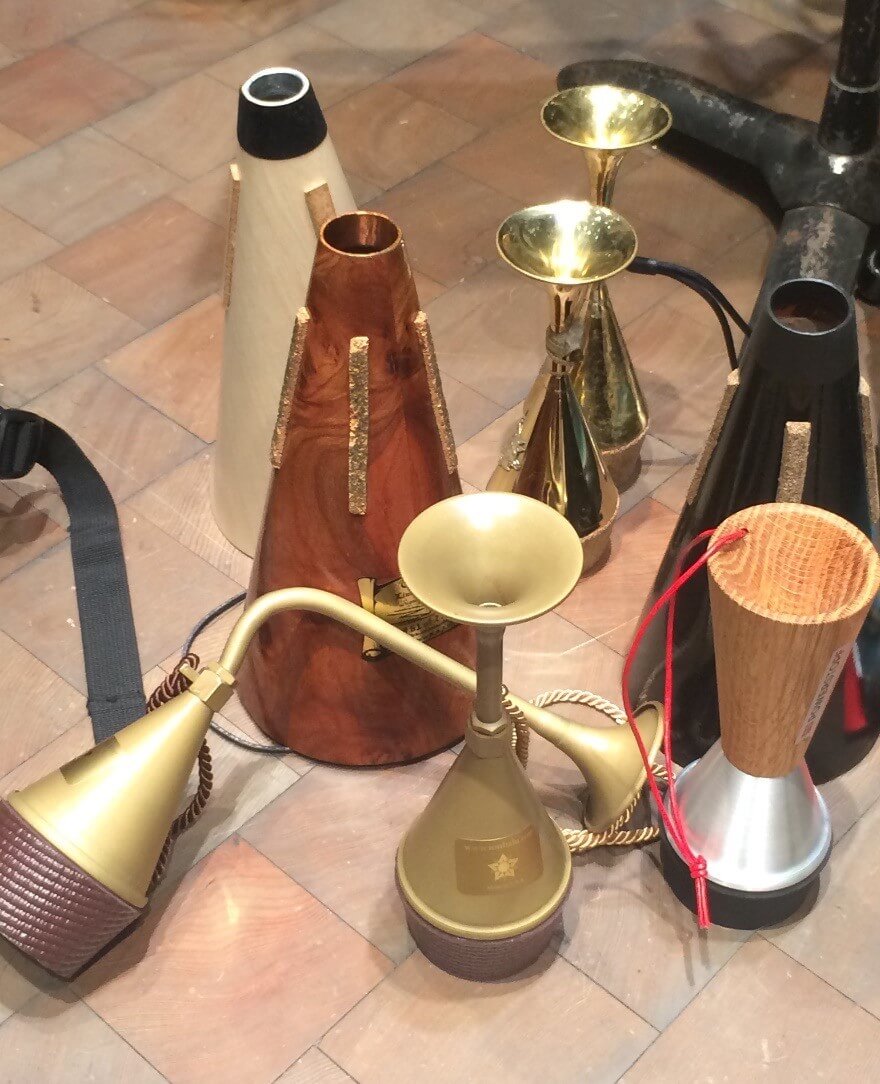
As I mentioned, there are many key moments for horns in the Ring but there is one that, for the principal French horn player, is both thrilling and terrifying in equal measure. It comes in Siegfried Act II as Siegfried tries to communicate with the Woodbird. He tries on a reed, and that fails, so he resorts to his trusted horn and unleashes a virtuosic horn call that wows the audience, and then inadvertently wakes the dragon Fafner. It is the hardest two minutes of horn music in the entire repertoire and it is completely exposed. The horn player is offstage in the wings, with Siegfried onstage miming to his music. Nobody else is playing. Kevin recalled that the first time he played this backstage he happened to glance onstage just before playing and was blinded by the side lights—not exactly the pristine practice room environment he had been rehearsing it in!
Listen to Kevin Rivard playing the horn call from Siegfried in the 2011 Ring.
Kevin and Mark lead an extraordinary group of horn players whose artistry, along with the whole orchestra, will take us on a thrilling journey through all four operas. As you listen to the Rhine River beginning to surge at the opening of Rheingold, give a thought to the horn players who are just embarking on an Olympic marathon of exquisite nobility.
